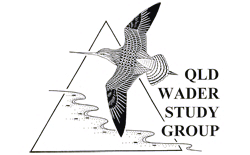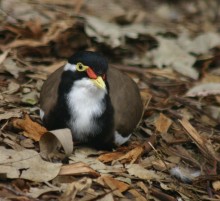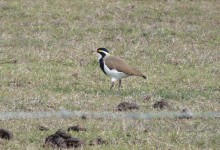Vanellus tricolor
Subspecies
None
Other Names
Banded Plover, Black-breasted Plover, Brown Plover, Flock Plover, Plain Plover.
Identification
Medium-large bird with a black breast band.
Plumage
Adult: The crown, the nape and the sides of the neck are black. The back of the neck and the rest of the upperparts are tan-brown. There is a white line from the back of the eye that extends to almost meet at the nape of the neck. The chin and throat are white. The breast is black and this meets the black of the neck forming a band. The belly, flanks and vent are white. There is a distinctive red wattle on the sides of the forehead. There is a yellow orbital ring and a yellow iris. The bill is yellow. The legs are grey with pink ‘knees’.
Juvenile: Similar to the adult plumage but the black areas are browner and the upperparts are mottled because the feathers are fringed with buff. The wattle is duller.
Distribution
Found in dry, open areas from grasslands, agricultural areas and semi-arid habitat. It is found though Southern Western Australia, South Australia, Victoria, Tasmania, New South Wales and south-east Queensland. It is rarer east of the Dividing Range. Its range in Western Australia is increasing.
Migratory habits
This species is endemic to Australia and non-migratory. Internal movement is poorly known but is found to group in the non-breeding season. It will travel if there is a drought to eastern areas.
Breeding
The nest is a shallow scrape that is lined with grasses and maybe stones. Usually the 4 eggs are incubated for 28 days. The birds fledge at about 60 days. A large percent of the young are predated. Mostly breeds south of 20ºS.
Status
The estimate population for this species is about 27,000 birds.
Confusing Species
Masked Lapwing: This bird is larger, does not have a breast-band. Its yellow wattle is more noticeable.


